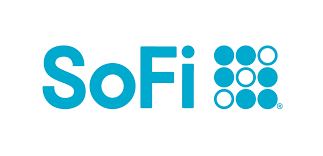Do you feel like you’ve been spending a lot of extra money and burning through savings lately? If so, you’re not alone. A recent study from the Federal Reserve found that Americans have finally spent the “excess savings” that they built up during the pandemic.
During March 2020–August 2021, Americans managed to save a lot of extra money. But now those savings accounts have been depleted. What are excess savings, where did they come from, and where did they go? And what does the end of the pandemic savings boom mean for the economy, for your investments, and for your savings account?
Let’s look at a few insights about the end of pandemic savings — and what could happen next.
“Excess savings” during the pandemic: $2.1 trillion
A recent blog article from The Fed explains that between March 2020 and August 2021, Americans built up an extra $2.1 trillion of savings. These are called “excess savings” by economists, or a “surplus” of savings — because people suddenly started saving significantly more than they had been saving before the pandemic hit.
Our Picks for the Best High-Yield Savings Accounts of 2024
|
SoFi Checking and Savings 
APY up to 4.60%
|
APY up to 4.60%
|
Min. to earn $0 |
|
Citizens Access® Savings 
|
Min. to earn $0.01 |
|
|
American Express® High Yield Savings 
APY 4.25%
|
APY 4.25%
|
Min. to earn $1 |
Remember the days of pandemic lockdowns and social distancing and stimulus checks, when most people stopped traveling, going to movies, and dining at restaurants? Along with the vast human suffering and tragedy of the pandemic, those times were terrible for a lot of small businesses and for many people’s mental health — but they were good times for savings accounts. It turns out, not going anywhere or doing anything for months is a great way to save money.
In a country where people are known for being spendthrifts, where many people struggle to build up a decent emergency fund, Americans saved an extra $2.1 trillion in about 18 months.
How Americans spent their extra pandemic savings
The Fed’s economists tracked America’s spending habits and found that Americans spent their excess savings from the pandemic at a rate of about $70 billion per month, starting from September 2021. That pace of spending sped up since autumn 2023, to a rate of about $85 billion per month — and as of March 2024, Americans’ excess savings were totally depleted.
The Fed’s data doesn’t show exactly what Americans spent that extra money on, but it’s likely that higher prices for groceries, food, healthcare, cars, car insurance, and pretty much everything else have taken their toll. Add some “revenge spending” and “doom spending” to the mix, and it’s easy to see how many Americans could quickly deplete their savings accounts in the past three years.
This doesn’t mean that all Americans have zero dollars left in the bank. Many Americans still have emergency savings, and some people are (hopefully) still saving more money every month out of every paycheck. But it does show that the extra stash of “excess savings” is finally gone.
The end of pandemic savings doesn’t mean economic pain
What does the depletion of America’s extra pandemic savings mean for the American economy? Good news: The Fed’s researchers don’t believe that the American economy is about to suffer from a slowdown in consumer spending.
The authors write: “…the depletion of these excess savings is unlikely to result in American households sharply cutting their spending levels as long as they are able to support their consumption habits through continuous employment or wage gains, other forms of wealth—including non-pandemic-related savings—and higher debt.”
The job market is still strong, wages are still rising, and many Americans still have access to credit, steady incomes, and plenty of spending money, even though prices have risen painfully in the past few years. We could be in for a “soft landing” in the economy, where even though the Fed has raised interest rates, it doesn’t lead to a recession.
What to do with your savings — excess or “regular”
No matter how much money you have in your savings account, you deserve to see that money grow. Some banks are still paying terribly low yields of 0.01% APY. But the best savings accounts and money market accounts are offering 5.00% APY and higher. If you still have savings, put them in a high-yield savings account. And try to keep adding to your savings every month.
Bottom line
New research from the Federal Reserve shows that Americans built up $2.1 trillion of “excess savings” during the pandemic — and as of March 2024, that extra money has all been spent. But that doesn’t mean we’re doomed to a recession and a stock market downturn. Many Americans are still spending at high levels, thanks to a strong job market, rising wages, and steady access to credit.
The economy might turn out to be fine, despite the end of the pandemic era’s extra pile of savings. But whatever happens next with the economy, your savings account should be earning a high yield — 5.00% APY or higher in the best savings accounts.
These savings accounts are FDIC insured and could earn you 11x your bank
Many people are missing out on guaranteed returns as their money languishes in a big bank savings account earning next to no interest. Our picks of the best online savings accounts could earn you 11x the national average savings account rate. Click here to uncover the best-in-class accounts that landed a spot on our short list of the best savings accounts for 2024.
